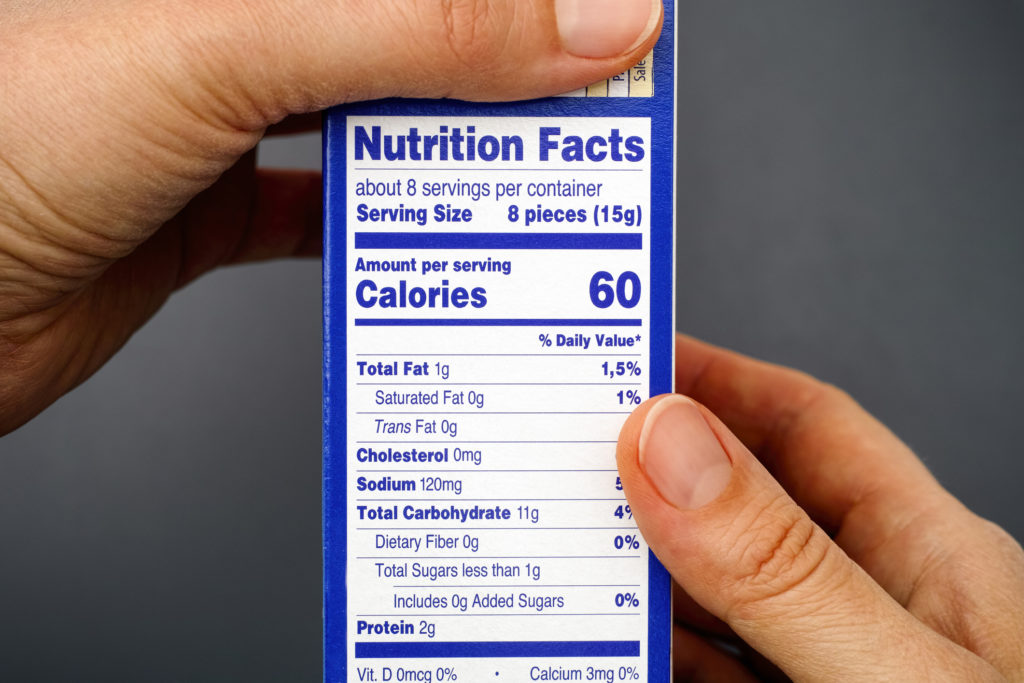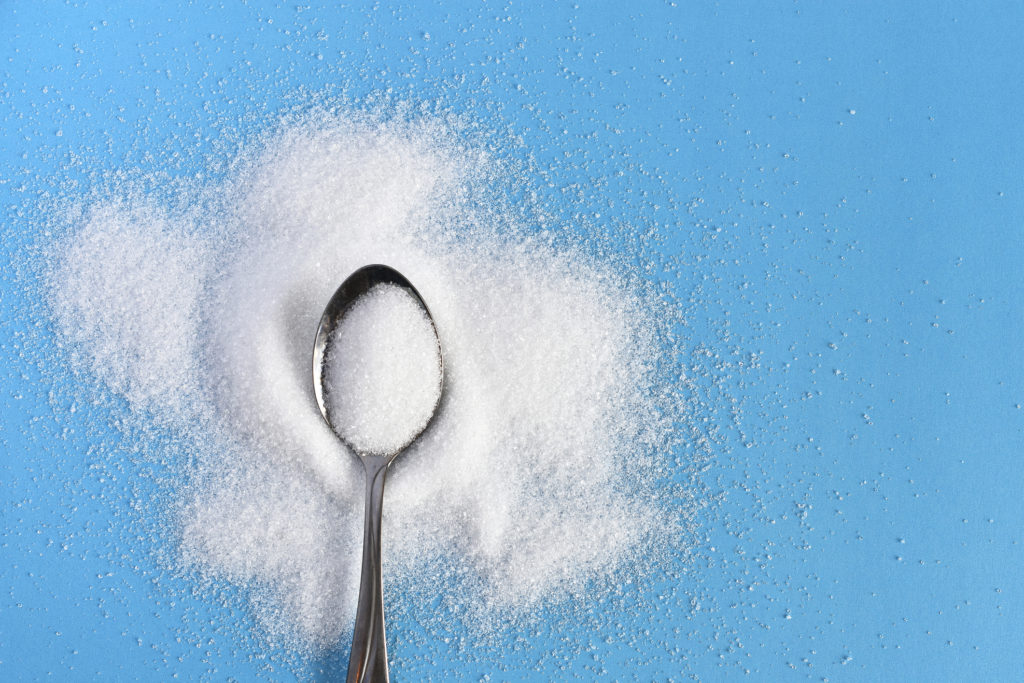Have you ever looked at a nutrition label and felt confused or overwhelmed, not knowing what to look for? Today we will break down the most important things you should be aware of when reading a nutrition facts label.

Ingredient List
The ingredient list is always listed in order of the ingredients that are present in the largest amounts to the least. If the first few ingredients are alarming, it’s better to pass on the product. You want at least the first three ingredients to be whole foods. Some ingredients that you want to look out for are refined grains, sugar or high fructose corn syrup, and hydrogenated oils.
Serving Size
The serving size is important to look for because it is often much smaller than what you will actually consume in one sitting. For example, if the serving size of a product is two of something, but you normally eat four, it’s important to know that you need to double everything (such as the calories, carbs, sugar, and fat) to get an accurate understanding of what you are actually consuming. Oftentimes, small, individual-sized drinks will technically contain two servings per bottle, but most people will drink the whole thing. This is a clever way to make the total amount of sugar seem like far less than most people will actually be consuming from the drink. It’s important to be aware of what your actual portion size is compared to the serving size listed on the label to accurately gauge what you are putting into your body.

Percent Daily Value (%DV)
The daily value listed on a nutrition label is a guide that tells you how much of certain nutrients are contained in a single serving of the product. This can be quite helpful. In general, 5% or less of a nutrient is considered low, while 20% of a nutrient or more is considered high. You want nutrients like necessary vitamins to be high, but you want things like sugar and trans fats to be low. However, you should know that the %DV is based on a 2,000 calorie diet, and your daily calorie range may be higher or lower than 2,000.
Sugar
Most of us know that we shouldn’t consume too much sugar, especially added sugar in processed foods. It’s important to look at how many grams of sugar is in a serving, but when it comes to the ingredient list, you should be aware of the multiple different names for sugar. Anything with the word sugar or syrup is a type of sugar, as well as barley malt, honey, molasses, cane juice crystals, lactose, corn sweetener, crystalline fructose, dextrose, fructose, sucrose, turbinado, fruit juice concentrate, galactose, glucose, disaccharides, and maltose. While some of these may be better than others, it’s good to be mindful of the various types of sugar you may see on the ingredients list of a nutrition label.

Trans Fats
Looking at the total grams of fat is great, but be especially mindful of trans fats. A diet high in trans fats leads to chronic inflammation, increases your risk of heart disease, and may even increase your risk of developing insulin resistance and diabetes. Partially hydrogenated oils, such as margarine and shortening, are the worst type of trans fats. A food manufacturer can label a product as having zero trans fat as long as it contains less than 0.5 grams of trans fat per serving. So, if you are consuming more than a single serving, which can be quite small and unrealistic as we mentioned earlier, then you can actually be consuming a gram or more of trans fat at a time. This may not seem like a lot for one sitting, but think about how that may add up in a whole day, a week, or months. So make sure that you take a look at the actual ingredients when looking for trans fats on a nutrition label.
Sodium
Sodium is something that some people have to watch out for more than others. Our bodies do need sodium to function properly, but consuming too much sodium is not recommended for those with hypertension (high blood pressure). There are conflicting studies on limiting sodium intake for individuals who don’t have hypertension, but it is always a good idea to be mindful of your consumption. Most dietary sodium that people consume comes from packaged and prepared foods, so looking for the sodium content on a nutrition label is important, especially for those who have been advised by their doctor to follow a low sodium diet. You can check the DV for sodium, or look at the milligrams contained in a serving size. When it comes to sodium claims on packaging, the FDA guidelines state that “Salt/Sodium Free” must have less than 5 mg of sodium per serving, “Low Sodium” must have less than 140 mg per serving, and “Reduced Sodium” must have at least 25% less sodium than the regular product. The FDA’s guidelines currently recommend limiting sodium intake to less than 2,300 mg per day.
